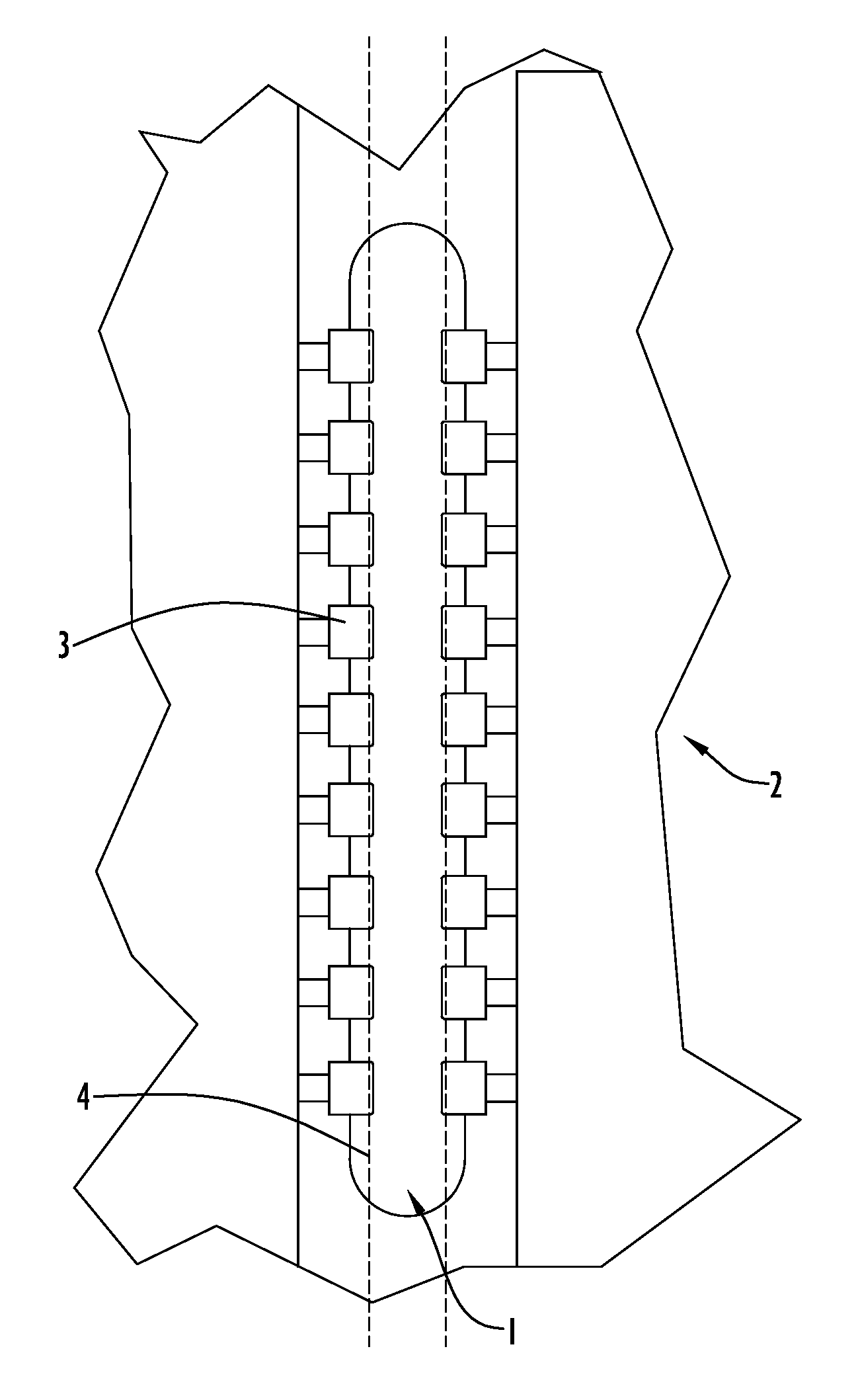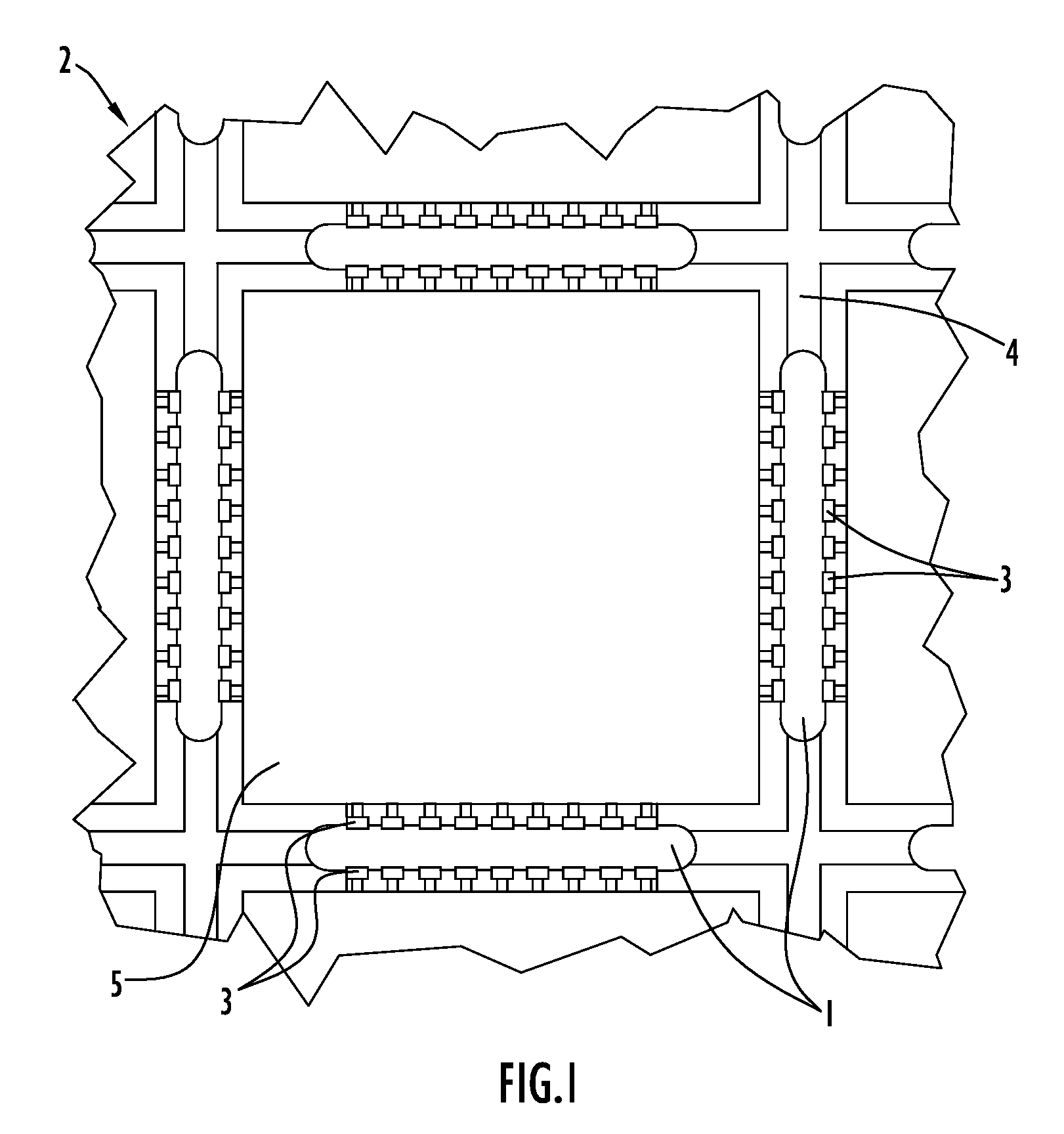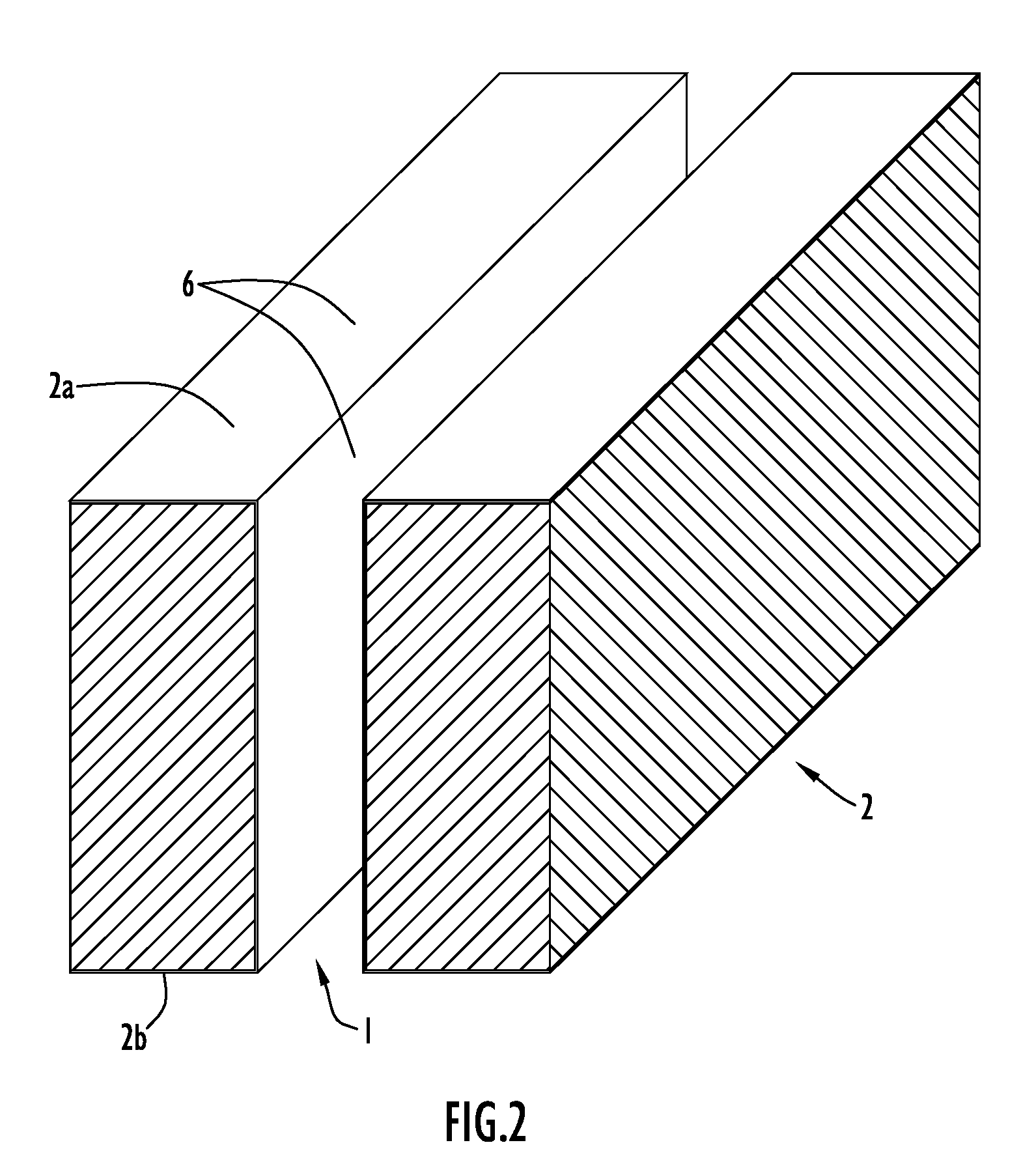Method of Manufacturing Electrical Conductors for a Semiconductor Device
a manufacturing method and technology for semiconductor devices, applied in semiconductor devices, semiconductor/solid-state device details, electrical apparatus, etc., can solve the problems of increasing the difficulty of creating vias and filling them with conductive materials, stress on conductive materials, and high cost of patterning after dicing, so as to avoid weakening or distortion of semiconductor wafers or overall devices, the effect of simplifying the plating process
- Summary
- Abstract
- Description
- Claims
- Application Information
AI Technical Summary
Benefits of technology
Problems solved by technology
Method used
Image
Examples
Embodiment Construction
[0022]Referring to an embodiment of the invention shown in FIG. 1, one or more channels or openings 1 are created between two surfaces 2a and 2b (not shown, see FIG. 2) of a semiconductor wafer or layer 2, and multiple electrically conductive elements 3 are provided between the surfaces 2a and 2b to allow for electrical connection therebetween. A gap between the semiconductor wafer or layer surfaces is maintained. Such a gap is advantageous as it allows for a difference in the thermal expansion properties of the semiconductor, insulator and conductor materials. There is therefore no weakening or distortion of the semiconductor wafer or the overall device when a change in temperature occurs.
[0023]The channels 1 are preferably placed along the sawing gates 4 of the semiconductor wafer 2 as shown in FIG. 1. In this way, openings that are large enough to simplify the processes needed to make vertical conductors 3 between layers of a semiconductor device incorporating the semiconductor w...
PUM
 Login to View More
Login to View More Abstract
Description
Claims
Application Information
 Login to View More
Login to View More - R&D Engineer
- R&D Manager
- IP Professional
- Industry Leading Data Capabilities
- Powerful AI technology
- Patent DNA Extraction
Browse by: Latest US Patents, China's latest patents, Technical Efficacy Thesaurus, Application Domain, Technology Topic, Popular Technical Reports.
© 2024 PatSnap. All rights reserved.Legal|Privacy policy|Modern Slavery Act Transparency Statement|Sitemap|About US| Contact US: help@patsnap.com










